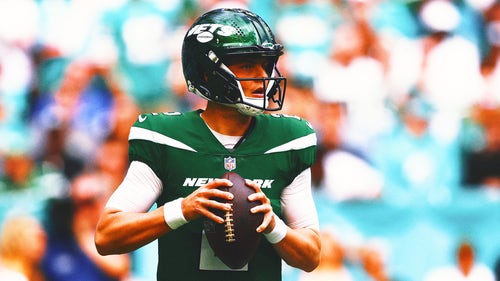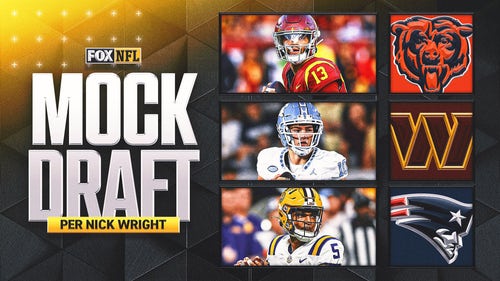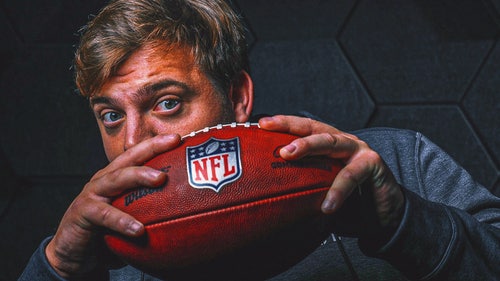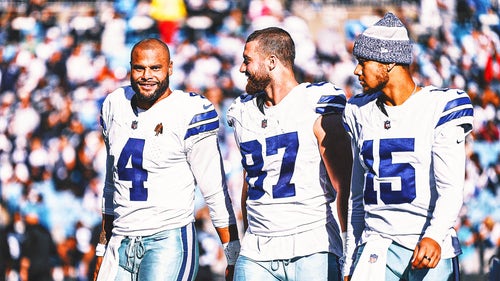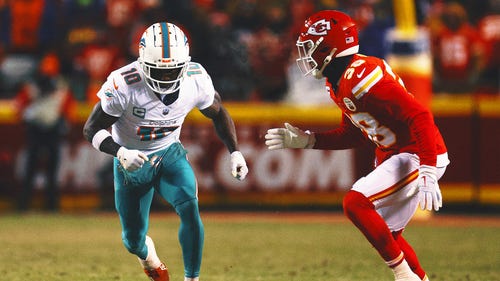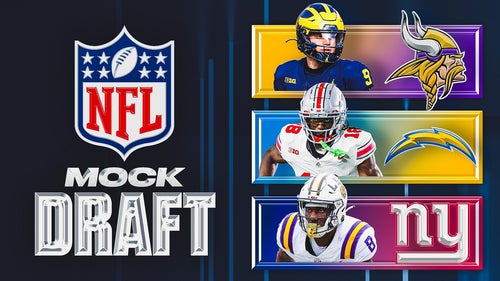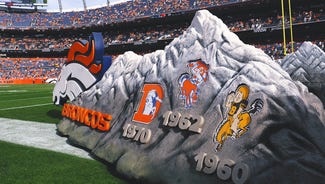
Study: Duerson had brain damage
Dave Duerson, a former NFL player who committed suicide in February, had ''moderately advanced'' brain damage related to blows to the head, according to the researcher who made the diagnosis.
''It's indisputable'' that Duerson had chronic traumatic encephalopathy, a disorder linked to repeated brain trauma, Dr. Ann McKee said Monday.
The findings were announced as part of an effort conducted by the Center for the Study of Traumatic Encephalopathy at Boston University's School of Medicine. The CSTE Brain Bank has the brains of more than 70 athletes and military veterans, with football players comprising more than half of the athletes.
Duerson played safety in the NFL for 11 seasons, seven with the Chicago Bears, and was chosen for four Pro Bowls before retiring in 1993.
''Dave Duerson had classic pathology of CTE and no evidence of any other disease,'' McKee said, ''and he has severe involvement of all the (brain) structures that affect things like judgment, inhibition, impulse control, mood and memory.''
The body of Duerson, who was 50, was found in Sunny Isles Beach, Fla., on Feb. 17. He left a note asking that his brain be given to the NFL's Brain Bank. He shot himself in the chest, ''presumably'' to preserve his brain for study, said Chris Nowinski, co-director of the CSTE.
The other co-directors are McKee, Dr. Robert Cantu and Dr. Robert Stern.
Duerson's case was ''moderately advanced,'' McKee said. ''The likelihood is that if he hadn't had the CTE, he wouldn't have developed those symptoms that he was experiencing at the end of his life and perhaps he wouldn't have been compelled to end his life.''
Cantu said that such results normally are published first, but the Duerson family wanted them released earlier. Duerson's former wife, daughter and three sons attended the news conference.
''We have been given the gift of closure,'' said his son, Tregg. ''We accept this gift with great humility, as we are mindful of other families that have lost loved ones and still bear the burden of unanswered questions.''
Duerson had at least 10 concussions in his NFL career, according to his family, and lost consciousness during some. However, he never was admitted to a hospital for them, Stern said. But he said it's also important to address hits to the head that don't cause concussions.
CSTE, created in 2008, is a collaboration between the BU School of Medicine and the Sports Legacy Institute, headed by Nowinski. The center has been aggressively researching head trauma in sports, and has received a $1 million gift from the NFL, which it has pushed for better treatment of concussions.
''We hope these findings will contribute more to the understanding of CTE,'' the NFL said in a statement. ''Our Head, Neck and Spine Medical Committee will study today's findings, and as a league we will continue to support the work of the scientists at the Boston University Center and elsewhere to address this issue in a forthright and effective way.''
Duerson was a third-round draft choice by the Bears out of Notre Dame in 1983. He played safety on the team that won the Super Bowl in the 1985 season. He moved to the New York Giants for one season in 1990, playing in another Super Bowl, then spent his last three NFL years with the Phoenix Cardinals.
Cantu said there is no treatment for CTE and research is being done to find ways to identify it in living people.
McKee compared the condition of Duerson's brain to those of other NFL players studied by the CSTE.
The damage wasn't as severe as that seen in the brains of Wally Hilgenberg, a Minnesota Vikings linebacker who died at 66 of amyotrophic lateral sclerosis, or Lou Creekmur, a Detroit Lions lineman who died at 82 of dementia, she said. The damage was about the same as that in the brain of former Houston and Miami linebacker John Grimsley, who died at 45 of an accidental gunshot wound.
Nowinski said ''the latest version of the NFL's guidelines (on concussions) are well thought out. And, I think, with the state of the science today, it's about the best we can do.''
But he said the problem starts much earlier, in youth football.
''The 6-year-olds are playing the same games as the pros when we know that their brains are far more susceptible to this damage,'' he said. ''My next focus is how do we change youth football so that a kid doesn't show up in the NFL with 10,000 hits to their head already?''
The NFL said it will ''advocate for the passage of Lystedt laws in all states'' to protect athletes from concussions.
The Lystedt law was adopted by the state of Washington, effective in July 2009, and 15 states have passed similar legislation since then, the league said.
The Washington law requires school districts and leagues using school property to remove from games or practice players that are suspected of having sustained a concussion. It also prohibits them from returning until authorized by a doctor trained in concussions, and mandates that parents and athletes sign concussion information sheets.
It is named for Zackery Lystedt, who returned to a school football game after suffering a concussion when he was 13. He suffered brain damage and fell into a coma, but has regained movement in his extremities.
Nowinski wants more safeguards.
''It's amazing to me that we have pitch counts in youth baseball to protect children's elbow ligaments,'' he said, ''but we do not count how often we hit them in the head to protect their brains.''






































































































































